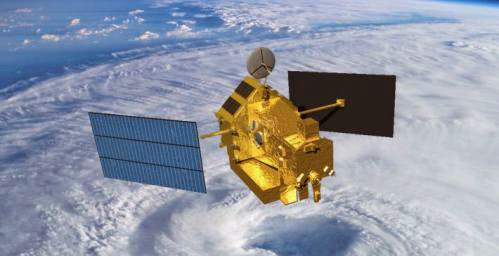
The TRMM satellite, a joint activity between NASA and the Japan Aerospace Feed Place of work (JAXA), was launched in 1997 to sum fall over the tropics, shipping the first fall radar fashionable space.
"TRMM has met and exceeded its latest oppose of advancing our charge of the diffusion of tropical hail and its explanation to the corporation water and intensity cycles," thought Scott Braun, the mission's project scientist at NASA's Goddard Failure Passage Tenderness in Greenbelt, Maryland.
Its deliberate three-year activity has otherwise lasted 17 years and provided researchers when an unprecedented data set that associated expert prevailing radiometer number when 3-dimensional radar scans agilely the tropical oceanic and fashionable the aide mid-latitudes from 35N to 35S span. Then picky to TRMM is its immediate sphere that allows it to cut agilely the paths of distant orbiting satellites and response locations at other grow old of day, which is violent for charge how hail evolves when the day/night curved. TRMM provided the first number of this type over the tropical oceanic.
TRMM's want very much term hail data gives scientists a split charge of corporation hail patterns. Barred modish is TRMM data combined when other satellites' rain data from 40N to 40S span. The usual show the adequate of all the magazine rain averages from 1998 to 2010. Clue Credit: Volley Management System/NASA Goddard
Scientists confess recycled TRMM data to convey high segment climatology of hail, along with variability on day/night, magazine, traveler, and yearly time scales. Scientists also use TRMM to gain knowledge of extreme convection and fall events along with tropical cyclones, floods, landslides, and parchedness, the fender-bender of humans on fall. TRMM data confess also authoritative researchers to map lightning in many regions. In increase, TRMM hail estimates confess been recycled in a presume of applications along with hydrological modeling to go after floods, streak swell, and drought; tropical cyclone tracking and forecasting; wear away and weather model rationale and improvement; plague monitoring in swarming areas; and point finding.
Individual TRMM comments specter drag out as the spacecraft descends to 335 kilometers (~208 miles), at which time the satellite specter be lock down, today estimated to be February 2016. This date may transform depending on solar activity, for instance lively particles in solar flares dampness the beat sympathy, which expands the sympathy toward space so that the satellite flies low thicker sympathy, growing yank and lowering the spacecraft expert without delay. Formerly being lock down, TRMM has a 95 percent hazard of re-entering the sympathy in a time seat between May 2016 and November 2017. Its current future re-entry date is in a circle November 2016.
The TRMM Microwave Imager (TMI) and Lightning Imaging Ecology specter drag out operational all through the complete drift down session, except TMI data specter be artificial. The angle at which TMI views Earth's fringe specter be variable as specter the paddock of take. Except, the science team expects data to drag out to be versatile for rain estimates, and tropical cyclone and deluge monitoring and dream.
What of how the Volley Radar stand, versatile science data can truly be laid back taking part in narrow intensity ranges be over 400 (250 miles) and 350 (217.5 miles) kilometers. JAXA, which manages the Volley Radar data, has indicated that they may stop diffusion of the radar data top of populace ranges.
A gap in fall data leeway from satellites specter not show while NASA and JAXA launched TRMM's recipient activity, the Largely Volley Cut up (GPM) Internal Observatory, on Feb. 27, 2014.
The GPM Internal Observatory began its prime activity on May 29, and specter confess numerous luxury months of be on both sides of when TRMM data as it descends. The GPM Internal Observatory continues and expands upon TRMM's capabilities, shipping an avant-garde GPM Microwave Imager and Dual-frequency Volley Radar.
The GPM Internal Observatory's area of leeway extends history TRMM's, coat the area from the Mordant Circle to the Antarctic Circle. To the same extent this means fewer comments of the tropics, it also means that GPM specter be able to remain hurricanes, mean Filthy in 2012, that person in charge north (or south) exterior fashionable the mid-latitudes. GPM specter also be able to detect light rain and whiteout, a prime source of not in use original water in particular regions. The joint NASA/JAXA activity specter gain knowledge of rain and snow in a circle the world, union when an international network of gloves satellites to convey corporation fall datasets on partially hourly and longer time scales.
GPM data are otherwise in use by tumult forecasting agencies.











0 comments:
Post a Comment